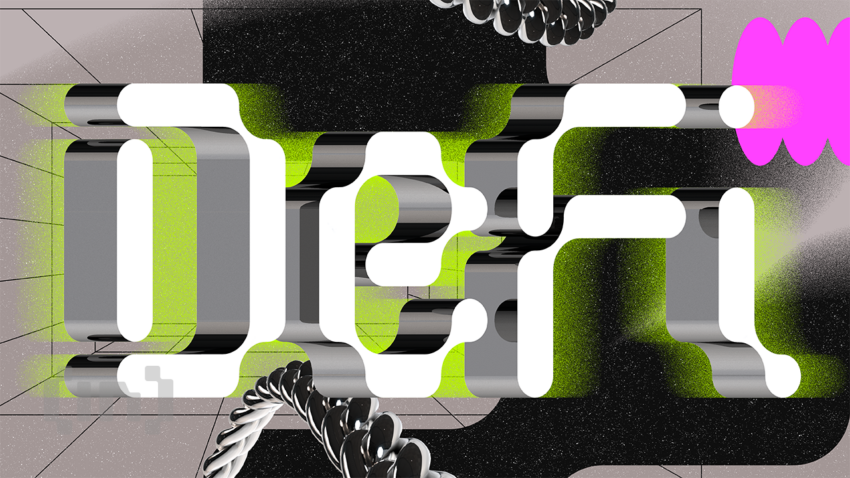ReFi is trying to use Blockchain to heal the planet

Crypto and blockchain do not have a reputation for saving the planet. At least not yet. The new ReFi phenomenon is trying to change that.
“The greatest threat to our planet is the belief that someone else will save it,” said British environmentalist and explorer Robert Swan. That quote has probably never felt more relevant. Although it’s probably not one you’re likely to hear recited at your next crypto conference. But increasingly, the crypto industry is trying to do its part. Quietly, a mission is underway to enable all the benefits of blockchain without the social or environmental downsides.
Famously, Bitcoin and its proof-of-work model are energy intensive. The world’s most popular cryptocurrency reportedly uses the same amount of energy as the countries of Pakistan, Malaysia and Ukraine. This is an inconvenient fact for a planet that has never cared more about climate change.
Last year, the crypto conversation was dominated by Ethereum’s change to proof-of-stake (PoS). Unlike the energy-intensive proof-of-work (PoW) consensus mechanism, validators are selected based on their stake in the network, which reduces energy consumption and improves computational efficiency. For non-crypto observers, the main goal was that the world’s second largest blockchain would use less energy.
The crypto markets, more generally, are also controversial. Not everyone is convinced of the value of digital assets, which only adds to the controversy surrounding their energy consumption. Observers unaware of the intricacies of crypto often see it as an overcharged and cruder version of traditional finance. Not a useful comparison, considering that even traditional finance has struggled to get a good hearing of late.
ReFi: Finance For Good
Blockchain has helped reinvent finance with DeFi (decentralized finance). But now there’s a new kid on the block. ReFi (or “regenerative finance”) aims to promote a more sustainable and fair economic system with blockchain. In theory, ReFi projects prioritize environmental and social responsibility over profit. As a movement, the goal is to promote a more inclusive and fair financial system.
The term is also incredibly broad – perhaps too broad. It could include carbon-negative blockchains, carbon capture and storage, or simply tokenization of green assets. Because it is such a new and amorphous term, it can be whatever you want it to be.
And there’s an audience for that, too. There is more than enough data to show that we – as a society – are trying to behave more ethically. According to a 2022 Deloitte consumer survey, consumers are increasingly making informed decisions with sustainability and the environment in mind. A recent study by NielsenIQ found that 78 percent of American consumers say that a sustainable lifestyle is important to them. According to a 2020 McKinsey US consumer sentiment survey, more than 60% of respondents said they would pay more for sustainable packaging.
But studies only tell us what is already obvious to most people. The public may never have cared more about the social and environmental consequences of their habits. (At least on paper.)

ReFi is still a relatively new idea
However, this change in habits that has taken place over the past decade or so presents an opportunity for a business with a savvy marketing department. “A ReFi token should not be enough to satisfy an ethical investment,” said Marius Grigoras, CEO of BHERO, in a discussion with BeInCrypto. “While we believe the ReFi movement is a positive force for change, we recognize that some projects may use the ReFi label to appear more ethical than they are. Unlike other investments where a gut feeling may be enough, investors must really be thorough when they evaluate [these] investments.”
The regenerative finance movement arguably began in the wake of the financial crisis of 2008. Although the term doesn’t make a regular appearance in the digital record until the mid-2010s. However, the abbreviation (ReFi) suggests its origins in DeFi (decentralized finance), which took off only in 2020. Since then, crypto has made a name for itself in the wider world. It’s not always good.
“ReFi can help shake off some of the negative reputation that crypto has gained over the years, and we can start to see real-world examples of how powerful crypto can be,” Grigoras continued. “As crypto values are heavily dependent on reputation and demand, this is great news for the industry! Additionally, by giving investors access to a wider range of projects, ReFi can help build confidence in the crypto space and bring in more mainstream investors.”
More awareness and education
If someone asks Masa Finance co-founder Calanthia Mei about the obstacles facing the ReFi sector, Mei gives a simple answer: awareness and education. “Many investors are still unfamiliar with crypto and the principles behind the ReFi movement,” Mei said. “Additionally, there is a lack of clarity around the regulatory framework for ReFi projects, which has caused hesitation from some investors.”
Many argue that the so-called “ReFi” movement has been in blockchain and crypto since its inception. After all, some of the biggest advantages of cryptocurrencies are unbanked and those in volatile economies. If that doesn’t count as ReFi, what does?
“Awareness brings users, traffic and funding to ReFi projects,” Mei added. “In a crypto bear market, some ReFi projects are struggling without adequate funding. [This] may also slow the innovation required to get these technologies into the hands of those who need them most.”
“The crypto persona has unfortunately become a caricature, but it does not accurately reflect the dynamic set of developers and projects working in the web3 community.”
Disclaimer
In accordance with Trust Project guidelines, this feature article presents the opinions and perspectives of industry experts or individuals. BeInCrypto is dedicated to transparent reporting, but the views expressed in this article do not necessarily reflect the views of BeInCrypto or its employees. Readers should verify information independently and consult with a professional before making decisions based on this content.
























